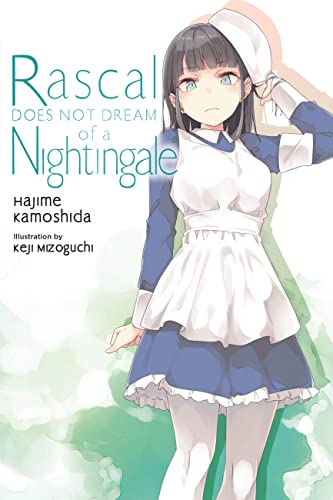By Hajime Kamoshida and Keji Mizoguchi. Released in Japan as “Seishun Buta Yarou wa My Student no Yume wo Minai” by Dengeki Bunko. Released in North America by Yen On. Translated by Andrew Cunningham.
With the first two books in the “college” part of this series, I have struggled to see why it’s been ongoing at all beyond “this is now a franchise with ongoing multimedia, you will write more until we tell you to stop” coming from Dengeki Bunko. With this book, I think I’ve gotten a handle on where this is going, helped out by a much stronger “cover character” than the others, even if she’s far less likeable. The original Rascal books were, for the most part, “a traumatic event in someone’s past displays itself as external symptoms that are horrible”, with Sakuta attempting to fix things in the same way that Koyomi Araragi or Hachiman Hikigaya try to fix things, i.e. throw themselves at it with little regard to danger. But Sakuta has learned better by now, helped by Mai literally dying for him, and so self-sacrifice isn’t on the menu. More importantly, the external symptoms are now wonderful.
Sakuta is still doing his cram-school job while also attending college, working his part-time job, trying to figure out what’s up with the Santa girl only he can see, and also spending time with his girlfriend. This is a lot. The prophetic dream thing is still ongoing, and Sakuta has a dream that on Christmas Eve he’s on a train … not with his girlfriend, but with Sara Himeji, a new student in his cram school class who has had two cram school teachers apparently try to make a move on her and be fired. Sakuta is #3, and is determined to avoid that possibility, despite events conspiring against him at every turn. And there’s also the fact that Sakuta from the other world where he’s more competent has told our Sakuta that Mai is in danger because of Touko.
Sara may not be 100% likeable, but she’s one of the best characters we’ve seen in this series for a while. She’s basically not had to struggle her entire life, and people are naturally drawn to her. As a result, when something does not go the way she wants, it ends up devastating her in a way that’s pretty easy for Touko to exploit. The best part of the book is the solution to the problem, as Sakuta spends most of it doing detective work to try to find a way out of this dream future, and ends up going with “do what the dream says and see what happens. But then Mai invites herself along. Mai being part of the solution is something that works very specifically for Sara, who is poleaxed at seeing what a real couple really in love is like, and when Mai starts reeling off things she loves about Sakuta and informs her she can do this all day, it cracks the Adolescence Syndrome like an egg. You can see and hear Sara grow up.
There is an ominous cliffhanger to this book, which implies that once again the universe is out to kill Mai. That said, the title of the next book is Rascal Does Not Believe in Santa Claus, so presumably we’ll confront Touko at last.



